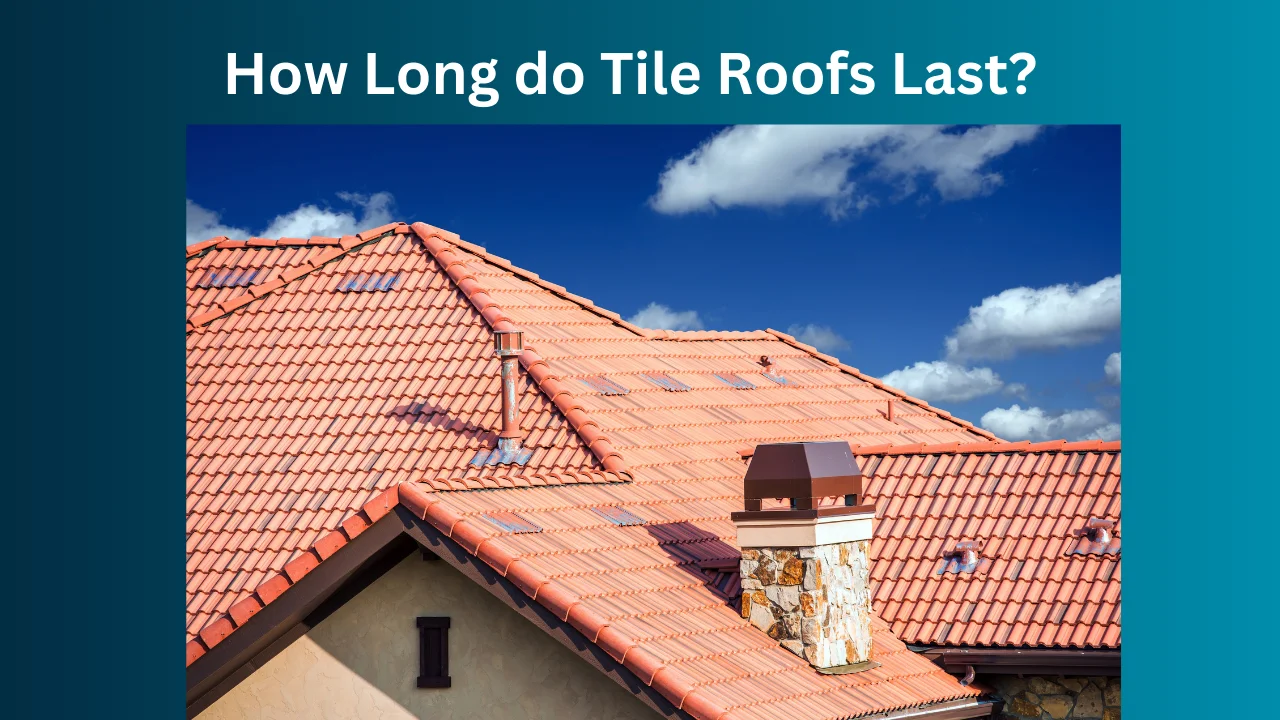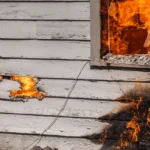Around the world, tile roofs are recognised as a symbol of long-lasting beauty and strength in roofing materials. Homeowners often choose tile roofs because of their long lifespan, attractive appearance, and ability to improve the structural integrity of a building. How Long do Tile Roofs Last? This all-inclusive guide delves into the lifespan of tile roofs, exploring the different factors that impact their durability and offering insights on how homeowners can get the most out of their roofing investment.
Understanding Tile Roof Lifespan
How long a tile roof lasts depends on a number of factors, including the materials used, the quality of the installation, and the weather. Depending on your needs for longevity and style, you can choose from three main varieties of tile roofs: clay, concrete, and slate. Homeowners can make well-informed decisions that are customised to their unique needs and environmental conditions by examining these types.
Clay Tile Roof Longevity
Materials and Construction
Because of their traditional firing process and natural composition, clay tiles are renowned for their strong structure and ability to endure harsh weather conditions. Their longevity is directly affected by the firing temperature and the purity of the clay, both of which have a substantial impact on their quality.
Impact of Environmental Factors
In dry or moderately rainy climates, clay tiles really shine. Nevertheless, without adequate care, they can crack in regions that experience heavy rainfall or frost. The tiles need to be sealed periodically to prevent water from penetrating and damaging them because of their porous nature.
Maintenance Requirements
The key to keeping a clay tile roof in good repair for a longer period of time is regular maintenance. Roof maintenance includes checking for broken or cracked tiles on a regular basis, cleaning to avoid moss and algae buildup, and making sure the underlayment is still in place.
Historical Longevity
Roofs made of clay tiles have a lifespan of 50 to 100 years when maintained properly. Their longevity speaks volumes about the quality of their construction and the fact that they will always be in style, whether you’re dealing with old or new buildings.
Concrete Tile Roof Durability
Structural Integrity and Composition
The process of making concrete tiles involves moulding a mixture of cement, sand, and water under high pressure. As a result of being denser and less porous, these tiles have a slightly shorter but still respectable lifespan compared to clay tiles.
Weather Resistance and Adaptability
Tiles made of concrete can withstand a wide range of weather conditions. You can rest assured that they will withstand a wide range of weather conditions thanks to their weight and strength, which makes them ideal for areas with unpredictable weather patterns.
Maintenance and Upkeep
Due to their density, concrete tiles don’t need as much upkeep as clay tiles, but they should still be inspected and cleaned periodically. To keep water out and make sure it lasts, make sure it’s installed correctly and reseal it every so often.
Life Expectancy
A concrete tile roof, if properly cared for, can endure anywhere from thirty to fifty years. For homeowners looking for a moderately priced, long-term roofing option, its durability and affordability make it a good compromise with clay tiles.
Slate Tile Roof Durability
Pinnacle of Roofing Materials
When it comes to long-lasting roofing materials, slate is the gold standard. These tiles are extremely weatherproof because they are made from natural slate rock, which is both strong and practically impermeable.
Environmental Compatibility
In extreme weather, such as heavy snowfall, rain, or wind, slate roofs perform exceptionally well. Their resistance to degradation in these environments makes them a great option for houses in regions with a wide range of weather patterns.
Maintenance Minimalism
Among the many benefits of slate tile roofing is how little upkeep it requires. Regular checks for debris and structural problems are usually all that’s needed to keep them in good repair.
Historic Durability
Historic buildings frequently feature slate roofs, which highlight their durability and timeless beauty due to their potential lifespan exceeding 100 years. Because of this, they are a top pick among homeowners who care deeply about the look and practicality of their roof.
Factors Affecting Tile Roof Lifespan
Quality of Installation
How long a tile roof lasts is greatly influenced by how well it was installed. Ensuring that tiles are properly fastened, aligned, and free from immediate structural faults is the goal of proper installation. Early failures, like leaks or tile displacement, caused by a bad installation can drastically shorten the roof’s expected lifespan.
Local Climate Conditions
Depending on the weather, tile roofs react in unique ways. The expansion and contraction of tiles, which can cause cracks, is a common problem in areas where temperatures fluctuate frequently. Tile surfaces can deteriorate at a faster rate in coastal areas that are highly exposed to salt. The key to a long-lasting roof is using a tile material that is appropriate for the area.
Underlayment Quality
Between the roof deck and tiles, there is a protective layer called underlayment. As an extra defence against water and environmental harm, it is useful. A tile roof’s longevity and effectiveness can be significantly improved with high-quality underlayment materials, whereas a roof with low-quality underlayment will deteriorate more quickly.
Ventilation and Insulation
To keep the tiles and the roof structure in good condition, it is important to have enough ventilation on the roof. This will help control the temperature and humidity in the attic. In addition, proper insulation prevents the roofing materials from being overly stressed by temperature extremes.
Regular Maintenance and Repairs
To prolong the life of a tile roof, regular maintenance is essential. In order to keep small problems from becoming big ones, it is important to fix any damages as soon as possible, such as cracked or broken tiles. The condition of the roof over time can be greatly improved with regular cleaning to remove debris and prevent the buildup of moss and algae.
Innovations in Tile Roofing Technology
Improved Material Composition
More long-lasting and lighter tile options have been developed thanks to recent advances in material science. Innovative manufacturing techniques have led to more uniform and resilient tiles made of modern clay and concrete. These tiles are now equipped with additives that enhance their strength and weather resistance.
Enhanced Color Retention and Aesthetics
The aesthetic value of tile roofs has also been a focus of technological advancements. Roofing materials are now treated and coated with new technologies that help tiles retain their colour even after years of exposure to the sun and other environmental factors.
Eco-friendly and Energy-efficient Options
Roofing materials that are both environmentally friendly and energy efficient have recently become more popular. Tiles can improve indoor comfort and cut energy costs by reflecting sunlight and reducing heat absorption. These eco-friendly choices save money in the long run while also helping the planet.
Smart Roofing Systems
Some modern tile roofs incorporate solar panels or are engineered to enhance rainwater collection systems. Modern energy and resource-saving trends align with these smart systems, which enhance the functionality of traditional tile roofs. This makes them a compelling choice for new builds and renovations alike.
Tile Roofing Compared to Other Roofing Materials
Cost-Effectiveness
Tile roofs may be more expensive than shingle or metal roofs initially, but they can end up saving money due to their extended lifespan and low maintenance needs. The long lifespan and increased resale value of a tile roof more than make up for the upfront cost.
Aesthetic and Architectural Versatility
When compared to other roofing materials, tile roofs stand out due to their unique visual appeal. To complement a wide range of architectural designs, from traditional to contemporary, tiles are available in a variety of shapes, colours, and styles.
Environmental Resistance
Tiles, in contrast to other materials, have a natural resistance to fire and are impervious to decay and insects. Their resistance to pests and wildfires makes them a great fit for places like these.
Energy Efficiency
Roofing with tiles can help keep the inside at a constant temperature, which means less energy is needed for heating and cooling.
FAQs
How often should tile roofs be inspected?
Tile roofs should be inspected at least once a year or after severe weather events.
Can tile roofs withstand heavy storms?
Yes, when properly installed, tile roofs are highly resistant to storm damage.
What are the signs of wear on a tile roof?
Signs include cracked, broken, or missing tiles, as well as leaks or visible underlayment.
Are slate tile roofs worth the cost?
Yes, for long-term durability and aesthetic appeal, slate roofs can be a worthwhile investment.
How to maintain a tile roof for longevity?
Regular inspections, prompt repairs, and periodic cleaning are key to maintaining a tile roof’s longevity.
Conclusion
It is important to think about material details, environmental factors, and maintenance practices when trying to understand how long do tile roofs last? Homeowners can choose roof materials that not only protect their homes from the elements but also add to their curb appeal, such as clay for its natural elegance, concrete for its robustness, or slate for its unparalleled durability. A tile roof, which adds value to any home and is aesthetically pleasing, can last for decades with the right materials and maintenance.

Shannon Reyes is a seasoned writer with a knack for crafting engaging blogs on a variety of service industries, including plumbing, cleansing, moving, pest control, and roofing. With a keen eye for detail and a passion for helping readers navigate complex topics, Shannon brings her expertise to life through informative and accessible content.










